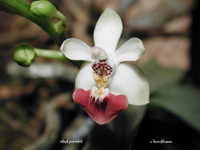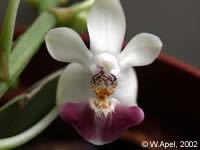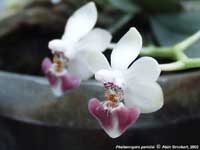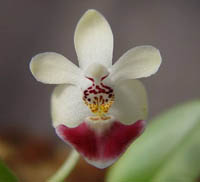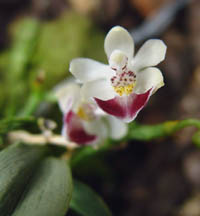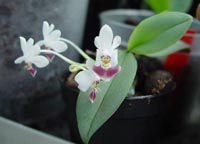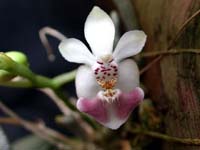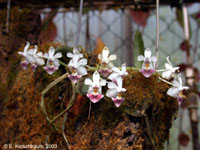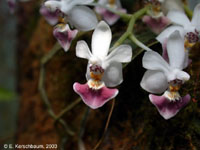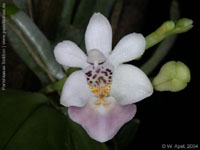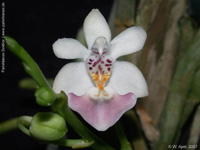Phalaenopsis appendiculata
Synonyme: Polychilos appendiculata
Diese Art ist von allen 4 Arten die seltenste. Sie unterscheidet sich von den anderen besonders durch die gestielten Blätter. Diese sind in der Regel bis 7 cm lang ,ca. 3.5 cm breit und ungefleckt grün. Der Blattstiel ist ca. 5 mm lang. An dem sehr kurzen Blütenstiel (ca. 15 mm) entspringen aus einer länglichen Verdickung die einzelnen weiß-violetten Blüten. Die einzelnen Blüten sind kaum größer als 15 mm im Durchmesser. Die Lippe ist auffallend dreieckig.
Lippe von Phal. appendiculata 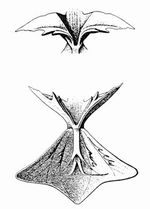 Zeichnung von H. R. SWEET
Zeichnung von H. R. SWEET
Habitus und Blütenbildung

Variationen:
Phal. appendiculata f. alba
zum Seitenanfang
Phalaenopsis gibbosa
Synonyme: Polychilos gibbosa
Diese Art besitzt von allen vier Arten die größten Infloreszenzen. Diese werden bis zu 15 cm lang und tragen mehrere Blüten (bis zu 10). Ihre Blätter entsprechen in ihrer Größe den anderen Arten. Sie sind länglich-oval bis elliptisch, ca. 12 cm lang, 4.5 cm breit und einfarbig grün. Die Blüten sind cremeweiss und nur 15 mm im Durchmesser . Die dreigeteilte Lippe besitzt auf dem Mittellappen zwei auffällige gelbe Flächen. Die Seitenlappen sind nach oben gebogen und besitzen gelblich braune Flecken. Die Säule weist einige Flecken in selber Färbung auf.
Lippe von Phal. gibbosa  Zeichnung von H. R. SWEET
Zeichnung von H. R. SWEET

Variationen:
Hier eine sehr interessante Farbvariante von H. Hermann
Phal. gibbosa f. flava
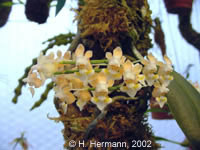

Phal. gibbosa f. alba/albilabia (?)
Und eine Mischung aus beiden Variationen
Phal. gibbosa cf. alba
zum Seitenanfang
Phalaenopsis lobbii
Synonyme: Polychilos lobbii, Phalaenopsis listeri
Phal. lobbii besitzt länglich-ovale bis elliptische Blätter die bis 13 cm lang und 5 cm breit sind. Sie sind ungefleckt grün. Die bis 13 cm langen Blütenstände tragen oft 4 - 8 Blüten. Diese sind ca. 2 cm im Durchmesser und besitzen cremeweisse Sepalen und Petalen. Die Lippe ist dreigeteilt. Die zwei nach oben gebogenen Seitenlappen sind gelbgrundig mit braunen Punkten. Der Mittellappen besitzt eine halbkreisförmige, freie und ziemlich geschwollene Platte mit unregelmäßig feingezahntem Rand, ist cremeweiss und besitzt zwei breite vertikale braune Streifen.
Lippe von Phal. lobbii 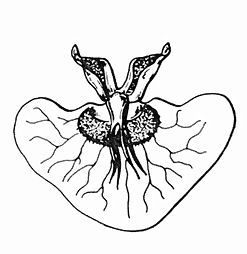 Zeichnung von H. R. SWEET
Zeichnung von H. R. SWEET
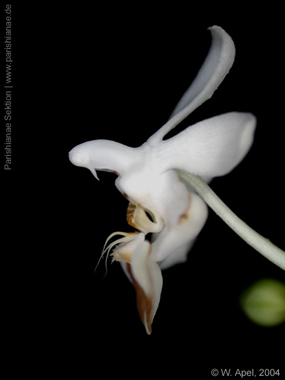
Variationen:
Phal. lobbii f. flava
Bei dieser Variation ist der Mittellappen gelbgrundig und nicht cremeweiss. (Auch Formen die nur die gelben Spitzen aber eine cremeweiße Mitte aufweisen, zählen zu dieser Variation). Die vertikalen braunen Streifen sind vorhanden.
Phal. lobbii f. flavilabia
Hier weist der Mittelappen keine vertikalen braunen Streifen sondern flächig gelbliche Stellen auf beiden Hälften auf. Diese Variation galt vormals als var. flava, wurde in E. A. Christensons Monografie (2001) jedoch in flavilabia umbenannt. Der Name flavilabia wurde von N. Trudel geprägt, der in einem seiner Orchideenkalender einer rein gelb gefärbten Phal. lobbii diesen Namen gab. E. A. Christenson hat bei seiner Beschreibung anhand des Bildmaterials der Varietät konsequenterweise diesen Namen verwendet.
zum Seitenanfang
Phalaenopsis parishii
Synonyme: Grafia parishii, Polychilos parishii, Aerides decumbens
Die länglich-ovalen, grün und ungefleckten Blätter dieser Art, erreichen bis zu 12 cm Länge und 5 cm Breite. Die Blütenstände können über 10 cm lang und mit einer Vielzahl von kleinen bis 2 cm großen Blüten besetzt sein. Diese sind weiß mit einer dreilappigen Lippe, welche einen zart bis kräftig violetten Mittellappen aufweißt. Die Seitenlappen sind hochgebogen und mit gelblich braunen Punkten gezeichnet. Auffällig ist die deutlich gefranste Platte auf dem Mittellappen und die 4 größeren 'Fransen'
Lippe von Phal. parishii 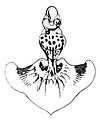 aus Saunders Refugium Botanicum 2,
aus Saunders Refugium Botanicum 2,
Tafel 85 (1870)
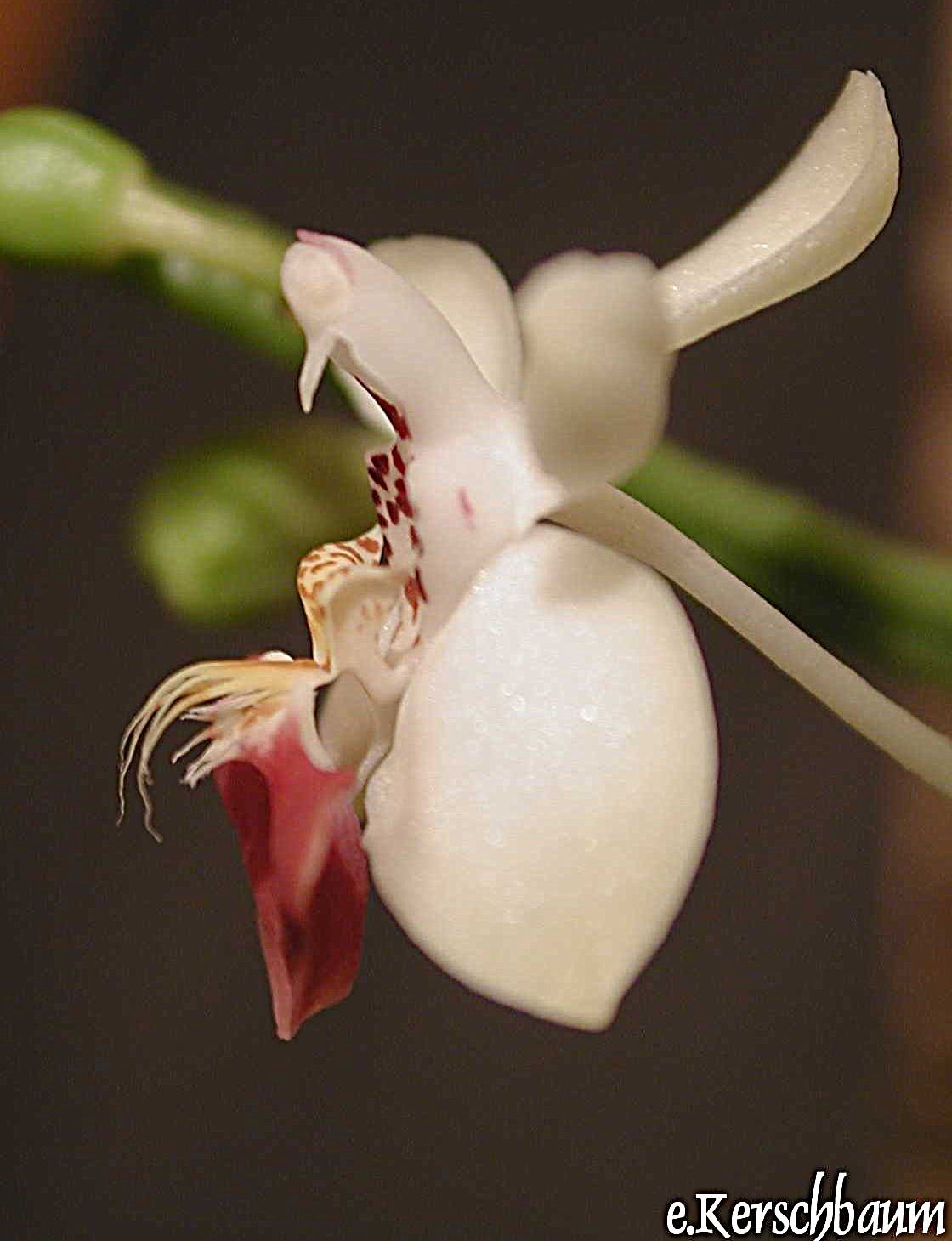
Variationen:
keine bekannt
zum Seitenanfang
 appendiculata
appendiculata  gibbosa
gibbosa  lobbii
lobbii  parishii
parishii

 Zeichnung von H. R. SWEET
Zeichnung von H. R. SWEET
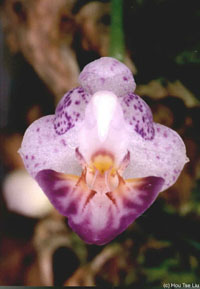

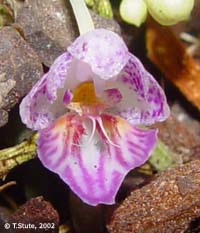
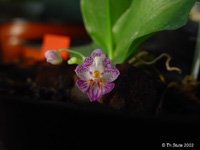
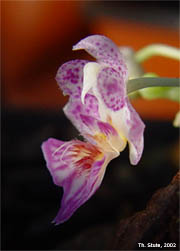
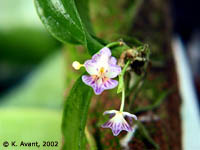

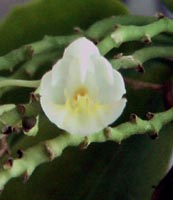
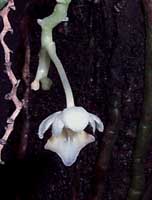
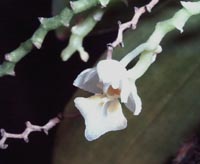
 Zeichnung von H. R. SWEET
Zeichnung von H. R. SWEET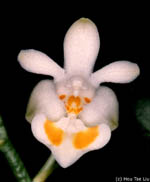
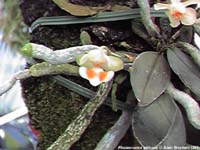
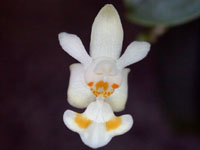
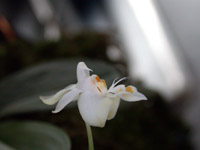

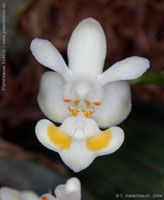
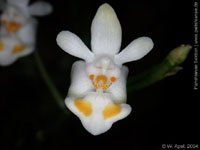
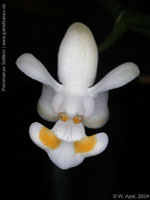




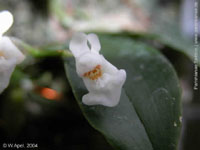
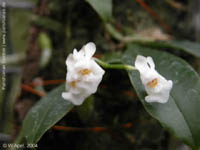
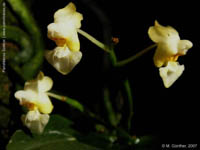
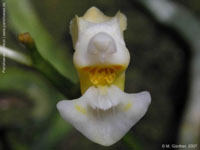
 Zeichnung von H. R. SWEET
Zeichnung von H. R. SWEET
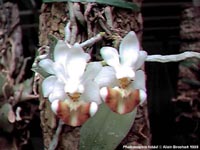
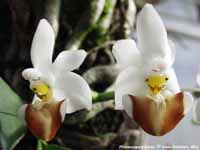
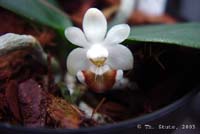
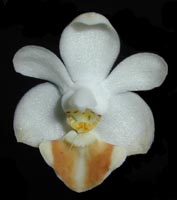
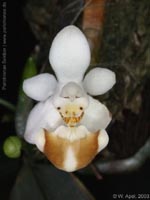
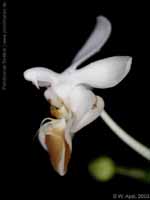
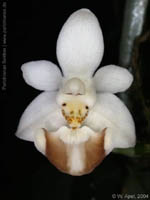
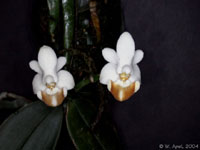
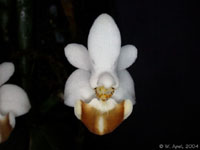



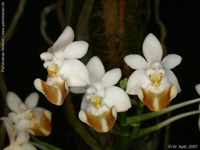



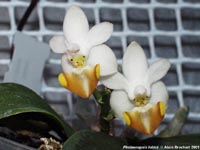
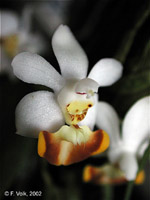
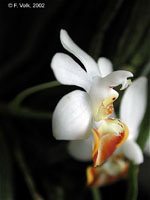
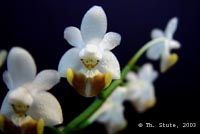
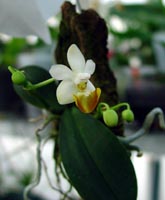
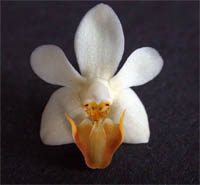
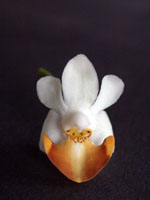
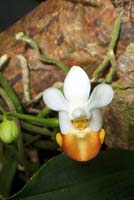
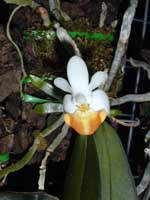
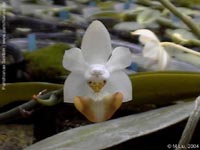
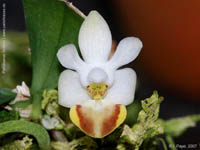
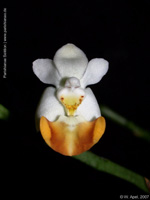
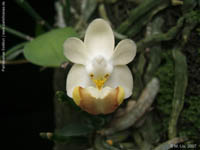
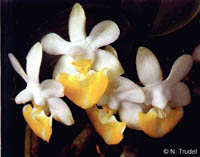
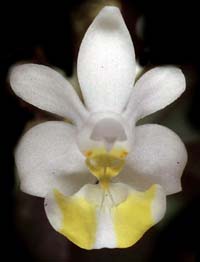
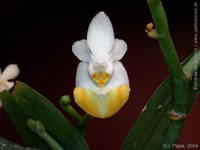
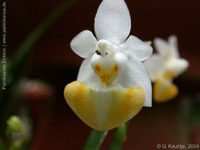
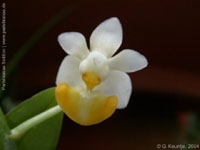
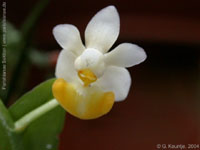
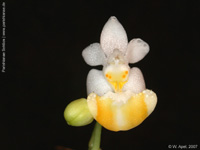
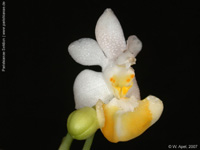
 aus Saunders Refugium Botanicum 2,
aus Saunders Refugium Botanicum 2,